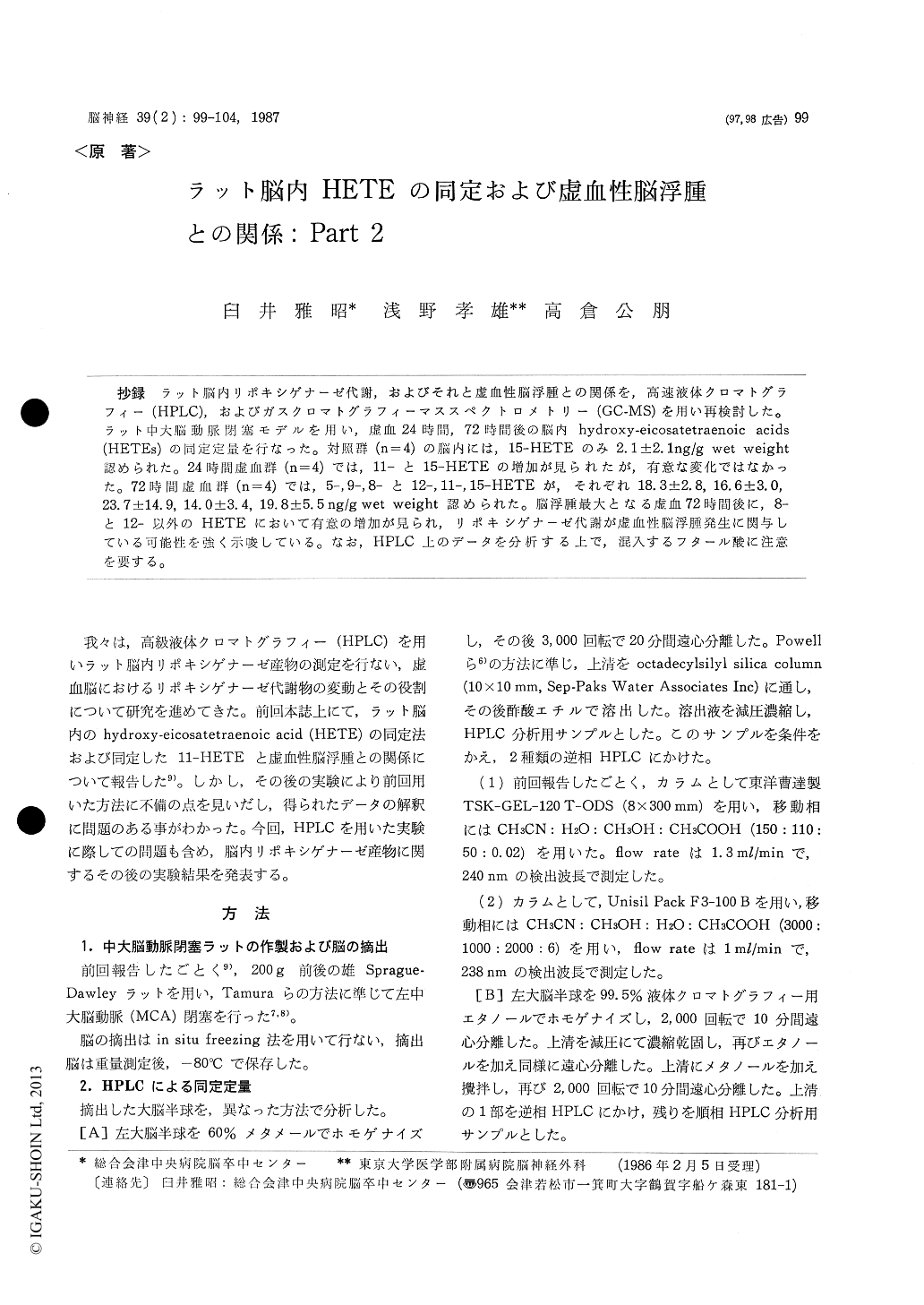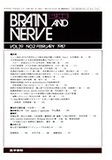Japanese
English
- 有料閲覧
- Abstract 文献概要
- 1ページ目 Look Inside
抄録 ラット脳内リポキシゲナーゼ代謝,およびそれと虚血性脳浮腫との関係を,高速液体クロマトグラフィー(HPLC),およびガスクロマトグラフィ--マススペクトロメトリー(GC-MS)を用い再検討した。ラット中大脳動脈閉塞モデルを用い,虚血24時間,72時間後の脳内hydroxy-eicosatetraenoic acids(HETEs)の同定定量を行なった。対照群(n=4)の脳内には,15-HETEのみ2.1±2.1ng/g wet weight認められた。24時間虚血群(n=4)では,11-と15-HETEの増加が見られたが,有意な変化ではなかった。72時間虚血群(n=4)では,5-,9-,8-と12-,11-,15-HETEが,それぞれ18.3±2.8,16.6±3.0,23.7±14.9,14.0±3.4,19.8±5,5ng/g wet weight認められた。脳浮腫最大となる虚血72時間後に,8—と12—以外のHETEにおいて有意の増加が見られ,リポキシゲナーゼ代謝が虚血性脳浮腫発生に関与している可能性を強く示唆している。なお,HPLC上のデータを分析する上で,混入するフタール酸に注意を要する。
We reported the detection of 11-hydroxy-eico-satetraenoic acid(HETE) in rat brain and its rele-vancy to ischemic brain edema. But the further study disclosed that the peak of 11-HETE on high performance liquid chromatography (HPLC) had been contaminated by dibutylphthalate. The results and our speculation about the roles of 11-HETE in ischemic brain turned out to be incor-rect. Re-examination of lipoxygenase products in rat brain was performed using gas chromatogra-phy-mass spectrometry (GC-MS) and HPLC.
The rat middle cerebral artery (MCA) occlusion model was used. The rat was satcrificed by in situ freezing 24 and 72 hours after MCA occlusion. The identification and quantitative study of HETEsin normal and ischemic rat brain was performed by HPLC and GC-MS. In the present study, several kinds of HPLC were used to prevent mis-interpretension by the contamination.
Sham operated control rat brain contained only 15-HETE and its content was 2.1±2.1 (mean± SE) ng/g wet weight. In 24 hours ischemic brain, 11-HETE newly appeared and the 15-HETE con-tent was increased. But these increases were not statistically significant. The hemisphere render-ed ischemic for 72 hours contained all HETEs, namely,5,9-,8- and 12-,11-,and 15-HETEs. Their amounts were 18.3±2.8*, 16.6±3.0**, 23.7±14.9,14.0±3.4**, 19.8±5.5**ng/g wet weight, re-spectively. All HETE contents except 8- and 12-HETEs were significantly increased 72 hours after MCA occlusion when ischemic cerebral edema reached its maximum(*:p<0.01, **:p<0.05). The increase of 5-HETE is suggestive of the presence of leukotriene in the ischemic brain which was not detected in this study. These results strongly support the possibility that the lipoxygenase meta-bolites would play important roles in the mecha-nism of ischemic cerebral edema.

Copyright © 1987, Igaku-Shoin Ltd. All rights reserved.


